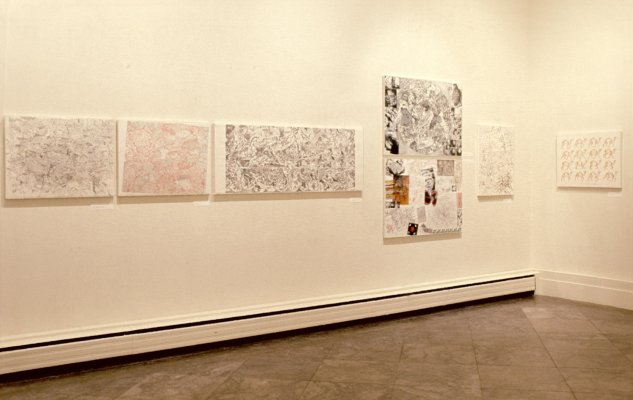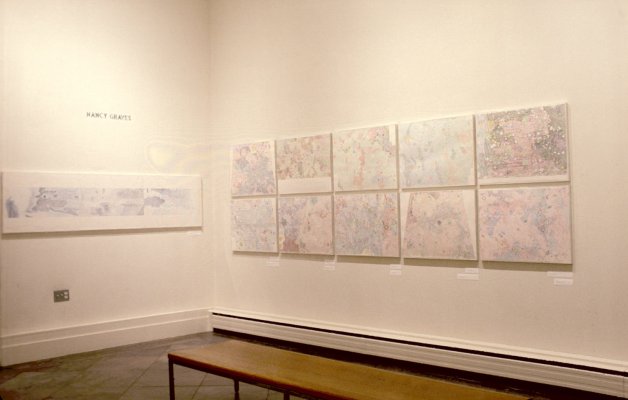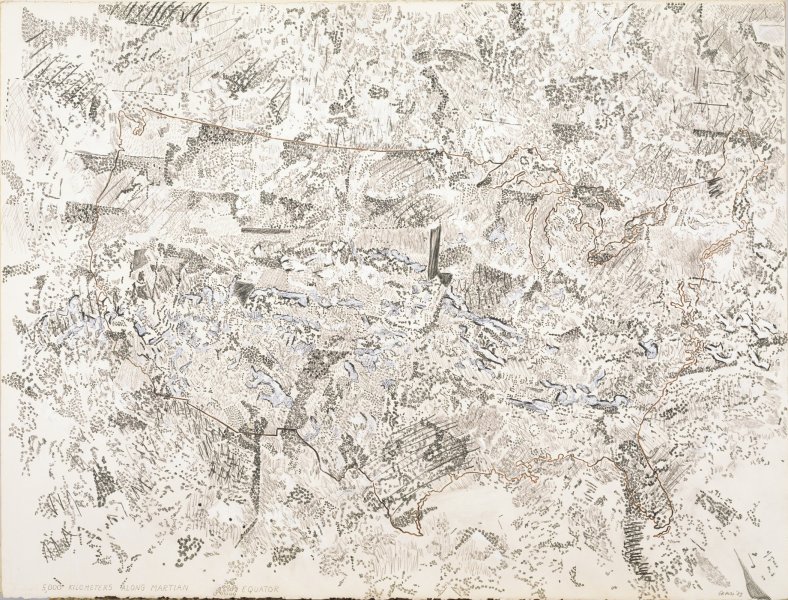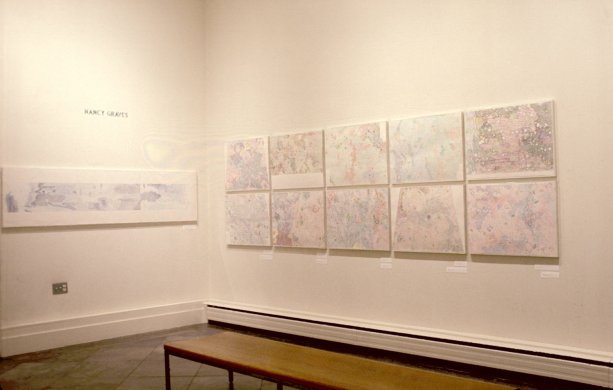Nancy Graves: Drawings, 1971–1973 featured twenty-six of the artist’s recent drawings. All the included works related to Graves’s films, three of which—Izy Boukir, 1970; Aves: Magnificent Frigate Bird, Great Flamingo, 1973; Reflections on the Moon, 1974—were screened as part of the exhibition opening. The artist herself was in attendance at the screening and provided commentary on the films, describing how they all related to her ongoing interest in mapping. “The map is a systematic presentation on a surface of the nature and distribution of phenomena in space,” the artist commented. “Maps and charts visualize what is abstract in nature as well as what is too immense to be seen.”
The exhibition was precipitated by the acquisition of Graves’s Grand Canyon of Mars—5,000 kilometers along Martian Equator, 1973. Prior to creating the work, Graves studied NASA images and charts of the surface of Mars, which she then freely interpreted and superimposed with an outline of the United States in the finished drawing. The country’s contours not only provide a sense of scale—contextualizing the almost unimaginable distance of 5,000 kilometers—but also speak to one of Graves’s beliefs about mapping, that “the connection between local pinpoints and cosmic points is one of the majestic relations recognized by science.”
Graves also served on the jury for the 34th Western New York Exhibition—which opened just a couple weeks after her exhibition on April 19—alongside Tom Freudenheim, Director of the Baltimore Museum of Art, and fellow artist Robert Indiana.
Looking for more drawing? Why not check out Drawing: The Beginning of Everything, on view through October 15, 2017.



